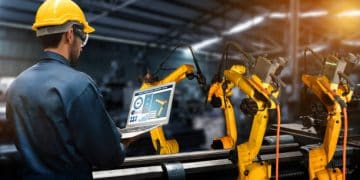In the city of Hefei, Anhui province, China’s commitment to technological advancement in the clean energy sector is evident. Despite rumors in Washington suggesting China’s clean energy growth is primarily subsidy-driven, on-the-ground investigations reveal that technological prowess and robust supply chains are the true drivers of competitiveness. At NIO’s advanced manufacturing hub in Hefei, the integration of cutting-edge technologies is apparent. Their innovative storage and retrieval system, dubbed the “Rubik’s Cube,” manages over 700 car bodies, enabling efficient, personalized production. The facility boasts more than 800 precision robots that can install car doors within 98 seconds, with an error margin below 0.5 millimeters. T
he streamlined production process from order to completion takes just 14 days, setting a new standard in manufacturing efficiency. Hefei is fast becoming a significant center for new energy vehicle (NEV) production, attracting major industry players such as Volkswagen and BYD, alongside NIO. These companies are contributing to a vibrant local ecosystem that supports rapid technological and industrial development. The push for innovation is underscored by BYD’s significant increase in R&D spending, which reached about 39.6 billion yuan ($5.47 billion) in 2023, indicating a 112 percent increase from the previous year and surpassing Tesla’s R&D investments.
The industry’s growth is also reflected in the substantial increase in both domestic and international patent filings related to NEV technologies. Technological advancements are also revolutionizing the solar panel manufacturing sector. At JA Solar’s factory, also located in Hefei, engineers use 5G-enabled AR glasses that allow for instant equipment inspections and operational adjustments, greatly enhancing production efficiency. Furthermore, Sungrow Power Supply has integrated AI language models into its operational protocols, improving safety and predictive maintenance standards significantly. Their systems can generate comprehensive diagnostic reports for large-scale power stations in under a minute, enhancing efficiency and preemptive maintenance capabilities.
The logistical operations within the sector have also seen major advancements. PTL’s Liyang facility operates a highly efficient warehouse with AI-driven robotics that manage lithium battery anode materials, improving logistics efficiency by 70% and reducing energy consumption by 30%. These advancements contribute to a robust regional supply chain network in China’s Yangtze River Delta region, which is crucial for the rapid development and deployment of NEV technologies. The proximity of suppliers and the use of local sourcing principles reduce transportation costs and enhance the responsiveness of the supply chain to market demands.
Tesla’s Shanghai factory exemplifies the success of these strategies, recognized by Elon Musk as the company’s best-performing factory, thanks to the skilled and diligent local workforce. This blend of high-tech innovation, strategic industry clustering, and advanced supply chain management not only defines China’s clean energy sector but also positions it as a leader in global efforts to transition away from fossil fuels.
Get the latest supply chain report news insights at The Supply Chain Report. For international trade resources, visit ADAMftd.com.
#GreenTechNews #ManufacturingNews #ChinaEnergy #SupplyChainNews #CleanEnergy

















